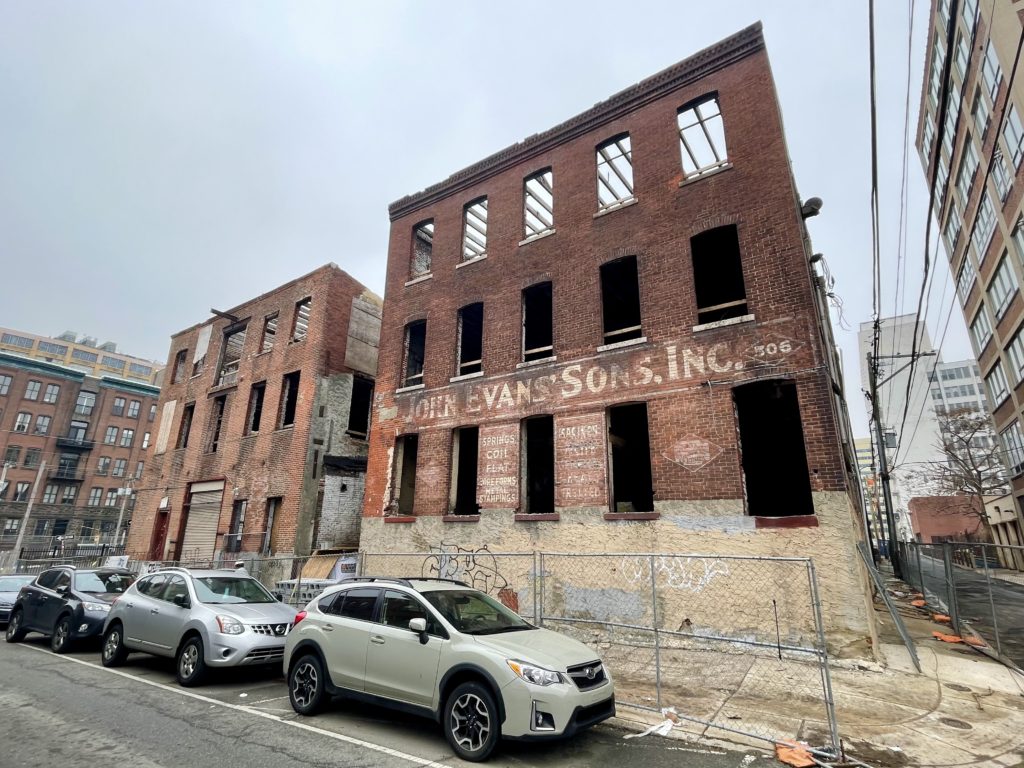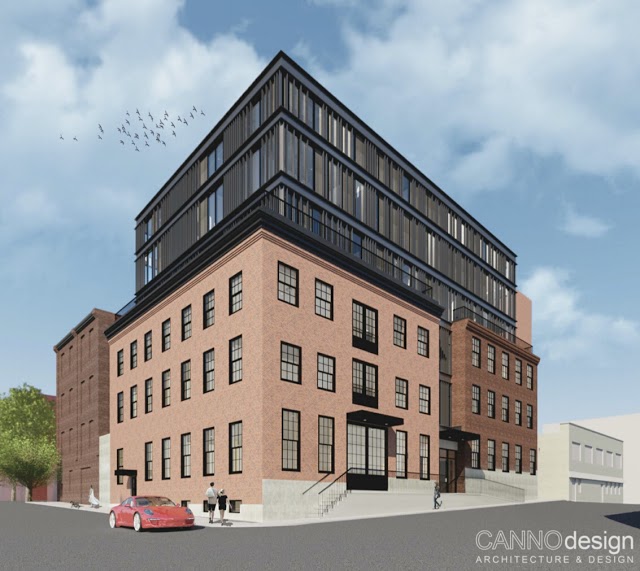
Another day, another project on 13th St. After covering the hotel overbuild project in Chinatown yesterday, we headed north and passed by an active construction site just south of Spring Garden Street in Callowhill. 500-506 N. 13th St. was most recently used as an urban horse stable. Before then, it was the home of the John Evans’ Sons and Keystone Spring Works, which sold springs, coils, and other products.
The parcel at 500-506 N. 13th St. is a more than 6,300 CMX-4 zoned property. In today’s climate, we would not have been surprised if the old buildings were demolished in order to pursue the densest possible project on the site. We’re happy to report that the original masonry buildings will be preserved and reused. The developers behind the project are planning a 3-story addition on top of the original 3-story buildings with Canno Design doing the architectural work.

The original plan for this project entailed 12 residential units plus office space throughout the building. Plans have since shifted and the development team is pursuing a variance for a 23-unit project with 2 ground floor commercial spaces. Without seeing the zoning refusal, we imagine the developers are trying to forego the required minimum amount of parking spaces for the project. Forcing a developer to include automobile parking when they are already undertaking the difficult and sensitive task of preserving an old building is the kind of backwards thinking that Philadelphia needs to change if we want more buildings to be saved and reused rather than demolished. Projects like this should be incentivized, not impeded.
Overall, this project looks amazing and we’re happy to see these buildings get a new lease on life. The renderings do not show the old ghost signs being preserved. We’re hoping that was just an oversight and that the project incorporates these cool pieces of Philadelphia industrial history into the final product.
How do you feel about this project? What can we do to incentivize more developers to adaptively reuse significant old buildings that may not be historically protected?
Kyle is a commercial real estate agent at Rittenhouse Realty Advisors, a homeowner, and a real estate investor in Philadelphia. Kyle uses his extensive Philadelphia real estate market knowledge to help his clients buy and sell multifamily investment properties, development opportunities, and industrial sites.
Email Kyle@RittenhouseRealty.com if you are looking to buy or sell a property
Instagram: @agent.kyle
